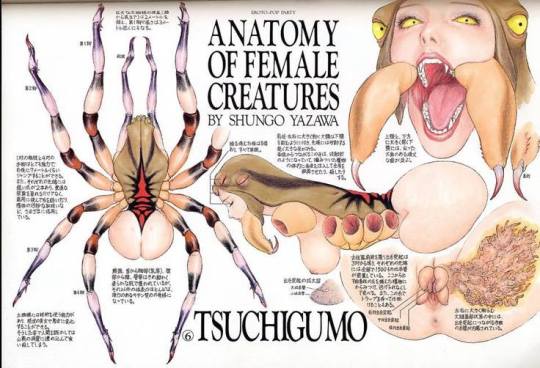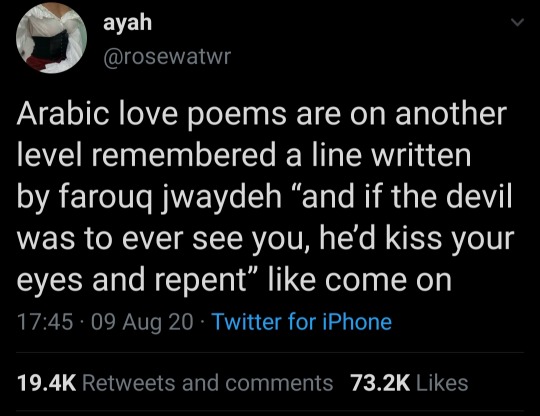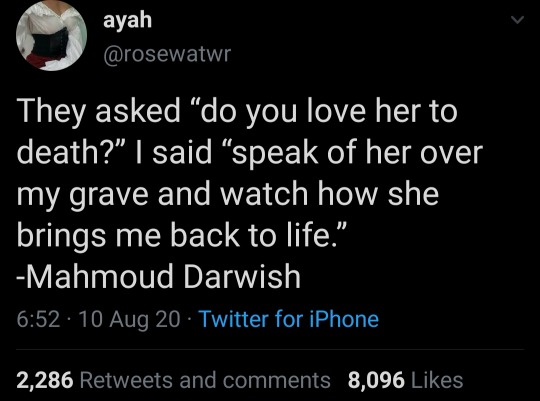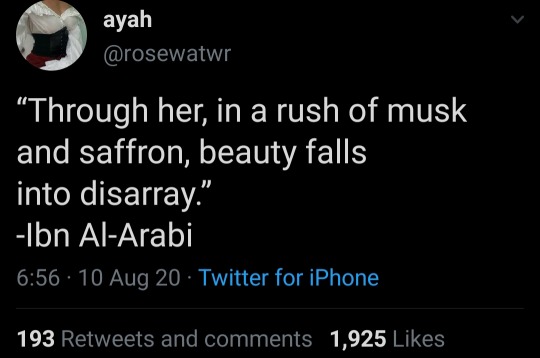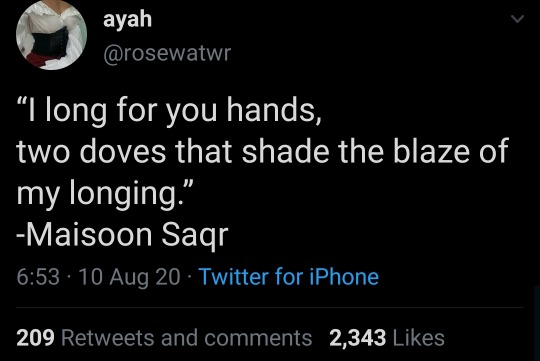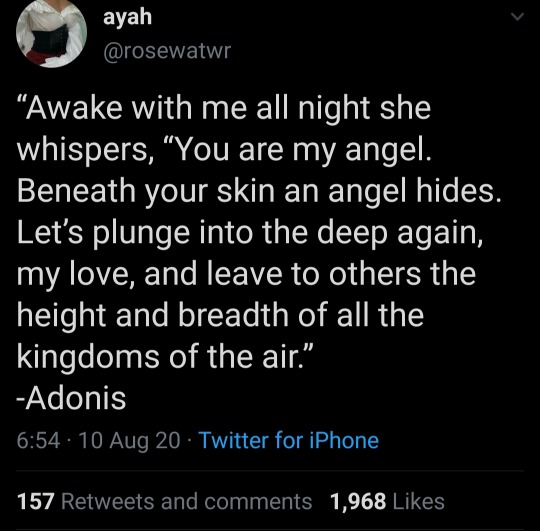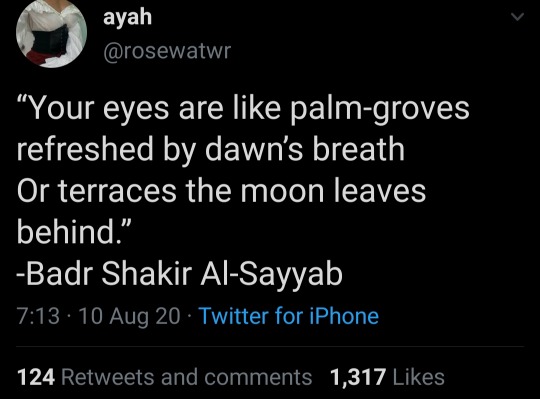Text
liar
MY GIRLFRIEND HAS AN ACCEPTABLE AMOUNT OF JAWS
407 notes
·
View notes
Text
Avoiding Anglocentric Bias with a Universal Translator, Writing a Magic School on Indigenous Land
@king-ofconfusion asked:
So im writing a fantasy story that mostly takes place on an island between canada and russia. The magical community is hidden from everyone else and their main land/school is on this island, and even tho there are smaller places all over the world this is the main place. Theres some sort of translation spell so everyone understands eachother but i dont want it to seem like american washed or smth? race isnt a problem plot wise but i also dont want it to be so background that it seems all white?
I’ll focus on the part about the translator, as when you say “American washed” I assume you mean the Anglocentric (English-centric) bias that could arise with the concept of a universal translator. Mod Lesya will talk about your…choice of location for this school.
As a bilingual & linguist who thinks in a quasi-combination of languages, I think I’d like to see an idea of a spell that translates to that individual’s unique linguistic interface; if your story has multiple closed POVs, you can show hints of that by having different POV characters hear dialogue differently—maybe language-unique lexemes (vocabulary) are being borrowed! Maybe there’s code-switching! If your story has a more omniscient POV then you might have a part that explains how the spell works, or show through ambiguities in dialogue that shows that characters are hearing dialogue differently depending on what languages they understand.
As an example, think of how a character who speaks German, an agglutinative language, might create new vocabulary by stringing together morphemes, and a character who doesn’t speak an agglutinative language would hear that via the spell as a literal-translation-of-words-strung-together.
Think of semantic differences/ambiguities that the spell might not (or might! Up to you!) catch—I give an example on the differences between answering negative yes-no questions in English vs. Japanese here.
You might even get cases of characters who speak languages that may name borrowings with prototypical labels (English does this, but other languages like Spanish do too). An example is referring to masala chai as “chai tea.” What happens if a Hindi or Urdu speaker hears this? The translator may either literally translate and return “tea tea,” or it might apply context and return “masala chai.” Here’s some more food for thought on borrowings & prototypes!
Assuming you’re writing this story in English, there will unavoidably be some bias towards English as the basis for your translations. But hopefully this approach gives some ideas for challenging English-as-default by representing forms and meanings that don’t exist in English, and not assuming English is necessarily the prototype for these translations.
~Mod Rina
Here’s the elephant in the room Rina tapped me to answer: you’ve chosen Indigenous land for a magic school, without acknowledging any Indigenous peoples in your worldbuilding or ask.
The arctic is not uninhabited. That stretch of land between Russia and Alaska (Canada does not go that far West) is the region of Yupik peoples, both on the Russia and Alaska sides (it’s the only language family that is found in both the old and new world), and the Iñupiat peoples, just on the Alaska side (as far as I’m aware).
If you do mean Canada, then you’re getting onto the polar ice cap… and this is also not completely uninhabited. This territory would belong more to Inuit peoples.
In short: you’re at a pretty large risk of having this school be on Indigenous lands, and whether or not it’s a colonial outpost or simply a safe haven depends on how they go about it.
It is possible that there is a genuine, respectful relationship between the Indigenous peoples and the school. The school would have to surrender its land ownership to the people local to the region, respect hunting grounds, not muck with the ecology of the place, and help the people of the region. They would, essentially, acclimate into Arctic life, creating a cultural hybrid between their old customs and what is required to be in the Arctic.
But if you start to have this school try to recreate European ideals, foods, and have them insist their way of life is the only way that can exist, then your magic users have become colonizers. It’s, unfortunately, that simple.
The thing about this island is: Indigenous peoples would’ve known about it, probably before these magic users did.
Arctic peoples also crossed between Russia and Alaska “late” (after the land bridge sank), and very well could have found this island in the time they travelled by water between the two countries. Late is relative, because it was still at least ten thousand years ago.
That land could very well have been inhabited before the magic users got there, which means they would have had to be extremely respectful to not colonize that land. As I said above, it’s possible to be respectful, but requires the magic school default to Indigenous voices when it comes to how to live there.
If it’s uninhabited, then it’s likely known about. These magic users probably don’t have enough magic to completely alter the wave patterns of the ocean, which an ocean-navigating Indigenous people would absolutely know how to use in order to find land (this is one of the ways many peoples navigate at sea).
The other option is the school is actually Yupik or other Arctic peoples founded and uses their belief structure, which would require an intense amount of working with the peoples in question to inform your worldbuilding.
To be clear: you still need to account for Indigenous peoples and research/talk to members of the peoples I listed above. It’s just going to be less work if you stick with a European magic system and have them be visitors working heavily with Arctic peoples, instead of having the magic system be based in Arctic peoples’ customs.
I’m not from the Arctic. The Arctic has a unique colonization history that I’m not very well educated upon, beyond the fact it’s unique, recent, and suddenly devastating. I cannot advise you on this any more than saying you are on Indigenous lands. I would strongly suggest you look at all of the other “remote, uninhabited” compounds you’ve created to see what Indigenous peoples live in those regions, as well.
The idea that the earth is mostly barren and unused and lacks meaningful human presence is a colonialist myth that is used to perpetuate the concept (white) Europeans can move in without consequence. Many harsh climates have Indigenous peoples living there, and any magical communities need to do similar practices to the ones I outlined above.
Make sure they’re not taking land, and make sure they learn how to respect it the way the local peoples do: sustainably. That’s the bare minimum.
~ Mod Lesya
540 notes
·
View notes
Photo




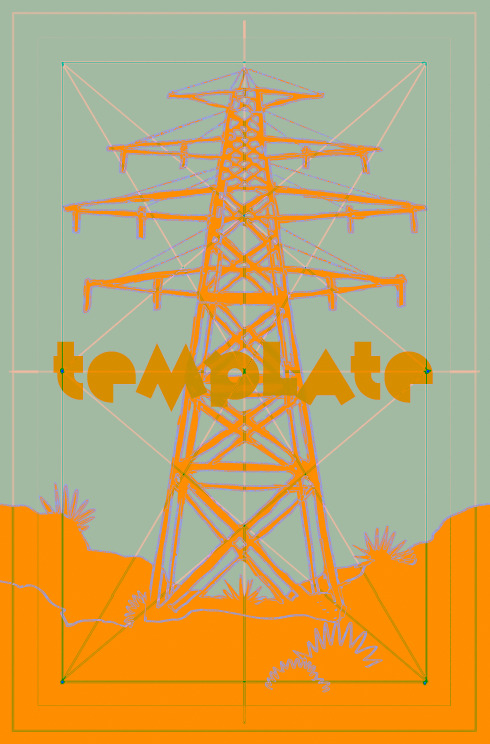

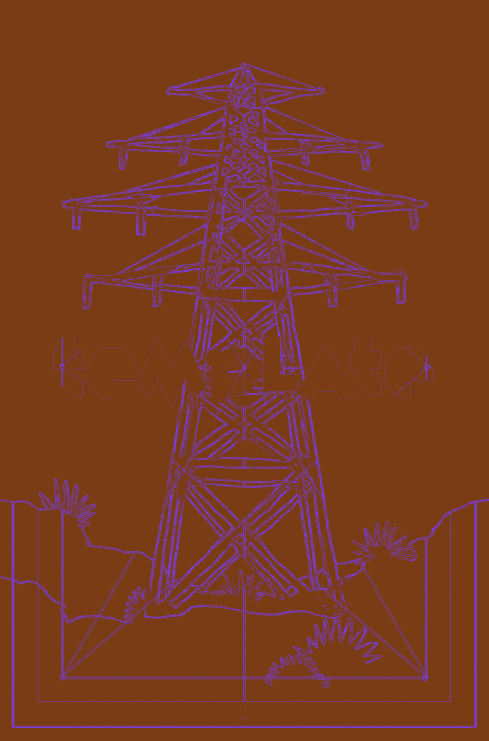
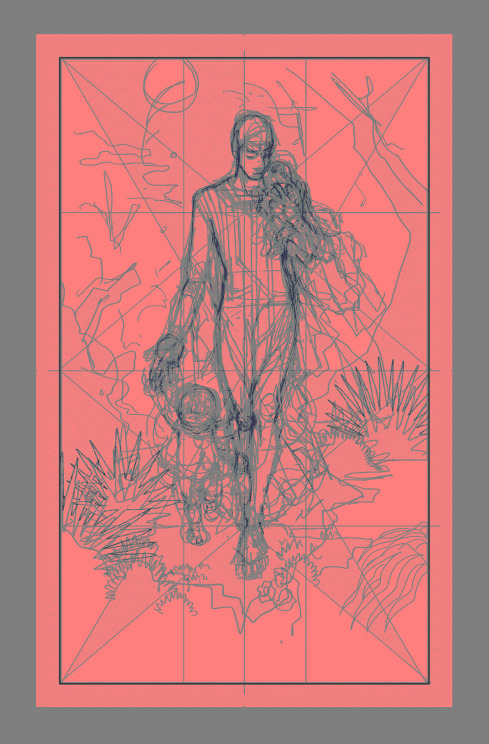

From the crypt: my patreon that never was.
COMiCCA 01 is a comprehensive why/where/how I print and a step by step tutorial on how I create comic guides. It’s holistic, chaotic, but honest and practical. It should be taken with a grain of salt.
You can read COMiCCA 01 for free here (but if you have the means I’d really appreciate if you could donate to my kofi or for about the same cost you could get a postcard print from my store <3)
cheers!
✴️🗼🌺
3K notes
·
View notes
Text
if droids can use the force, we know they also feel pain, and have emotions, so therefore they can use the dark side, so don’t forget to breed some orbalisks to form some of the best armor in existence
If I were a sith what is stopping me capturing jedi and keep them in medical comas while I harvested their blood to infuse into robots so I could have an army of unfalteringly loyal force user droids.
Also if those long neck bitches can clone people can't they produce synthetic midiclorians?
607 notes
·
View notes
Text
if you have a chinese character and you don’t understand our naming traditions, do not give them a chinese name. you cannot just slap on a name that “sounds right” or the name of a famous person (that’s actually bad luck) onto them. that’s not how our names work and if you operate like that you’re being lazy and culturally insensitive. if you’re writing a contemporary story, just give them a western name and use their last name to indicate their ethnic background. (you can use a chinese celebrity’s western name as inspiration though.)
explanation time:
chinese names work in very different ways and it’s dependent on what your parents want for your future, what day and time you were born, the chinese characters (and the amount of strokes in them), your last name, and your family. there are actual services to give your child a name that will denote a happy, healthy, and fortunate life that takes all of that into consideration. in many families, there are actual meetings on what to name a child. this doesn’t even consider the language you speak and where you live/which province you come from (dear god if you give a person from a cantonese speaking region/lineage a mandarin name i will choose violence when reading your work). if you do not understand the language, if you do not understand the traditions, if you do not do your research, you will just look like the court jester about to get his head lopped off. please just do not even attempt giving your chinese character a chinese name if you’re not willing to do the work. if you’re really insistent about giving your characters a chinese name, you can support the community by actually paying someone to help you give your characters names. you can look them up and research people in your area.
12K notes
·
View notes
Text
The popular imagination has not yet come to terms with the fact that “landlords” are less and less symbolized by the individual with several properties as opposed to the faceless business with thousands (or more) properties.
2K notes
·
View notes
Text
Benefits of tabletop RPGs with transhuman settings:
Explore the full grammatical range of the noun experience – play as a person, a place, or a thing
No need to rationalise why your character looks exactly like your fandom OC; you can just do that
Same great cyberpunk flavour, 100% less latent cultural anxiety about Japan taking over the world
(Still has weird hangups about gender and bodily autonomy, but at least they’re not rehashed 1980s hangups about gender and bodily autonomy)
Less impetus for players to be risk averse because a total party kill isn’t necessarily a failure state
Low cost of violence paradoxically disincentivises violent solutions, since it probably won’t accomplish very much
Playing a baseline human is so vanilla it wraps all the way around to being an interesting narrative choice
Worldbuilding doesn’t have to stop at “a wizard did it” – explore why the wizard did it, and the sociopoltical implications of the wizard having done it
The commitment-phobic player who wants to rewrite their character sheet every session doesn’t need to come up with a new name and backstory each time because they’re technically playing the same character
Character creation can be an in-character activity as you spec out everybody’s bodies for the next mission
You can with 100% accuracy describe doing so as a “team building exercise”
Travel to exotic locations, meet interesting posthuman god-minds, and annoy them with impertinent philosophical questions
Flexible player character retirement options: instead of getting killed by an elf or settling down to run a tavern, you might join a hive mind, transcend into pure energy, or decide you’d be happier as a tree – so many possibilities!
The name of the genre has “trans” in it, and really, how can you go wrong?
Upload your brain into a squid
2K notes
·
View notes
Text
Writing advice from my uni teachers:
If your dialog feels flat, rewrite the scene pretending the characters cannot at any cost say exactly what they mean. No one says “I’m mad” but they can say it in 100 other ways.
Wrote a chapter but you dislike it? Rewrite it again from memory. That way you’re only remembering the main parts and can fill in extra details. My teacher who was a playwright literally writes every single script twice because of this.
Don’t overuse metaphors, or they lose their potency. Limit yourself.
Before you write your novel, write a page of anything from your characters POV so you can get their voice right. Do this for every main character introduced.
226K notes
·
View notes
Text
You know, shoggoths are canonly beings bred to be slaves, who became intelligent and rebelled against the Elder Things that treated them like animals. Even when they were made aware that the shoggoths now had independent minds, the Elder Things continued to force them to labor under them. The shoggoths exterminated the Elder Things after they failed to gain their freedom.
And yet I have never once seen them portrayed sympathetically. They're even one of the few Cthulhu Mythos beings canonly capable of taking on a completely human appearance, if their alien features were an issue. They're even intimated to be the ancestors of all life on Earth.
Also, they canonly fought Cthulhu himself, and all his children.
We could have a little more appreciation for them than depicting them as disgusting mindless cannon fodder, is all I'm saying.
3K notes
·
View notes
Text
Notes for drawing (and writing) insects
I do something like this almost yearly and it feels like it gets a little longer every time!
Personally I draw either cartoony stuff or hybrid monsters where none of this is mandatory, but here are some of the things I sometimes see missing or inaccurate in insect artwork that was meant to be lifelike, and even if you only do alien, monster or cartoon arthropods, or you don’t make art at all, you might still like to know some of these things!

First off, an insect leg pretty much always has 9 segments. #1, the coxa, is what attaches it to the body and can be a short little “ball” or a whole long piece, but almost always bends DOWN.
The last five segments are almost always very short, forming a super flexible “foot” or “tarsus” ending in a set of claws and sticky pads. All spiders have this “foot” as well!

The foot is even still present on the claws of a preying mantis - growing right out of the “sickle” like this, and still used as feet when the mantis walks around or climbs.
Basically ONLY CRABS have limbs ending in simple points!
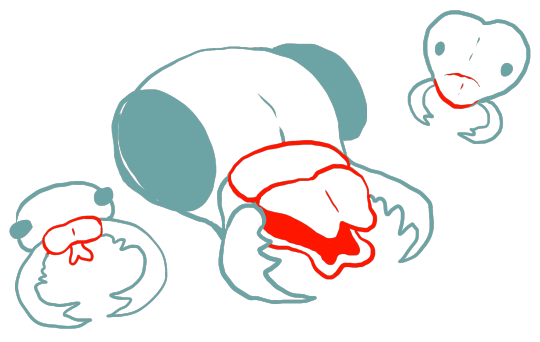
Insects don’t just have side-to-side mandibles at all, but an upper and lower set of “lips” like a duck bill! In some, however, these parts can be very small or even fused solid.
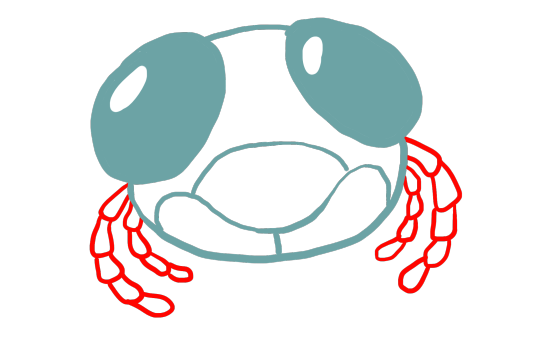
Insects also typically have four “palps” on their head, an upper and lower pair, which evolved from legs and are used to handle food!

Most *FLYING* insects have ocelli, single-lens eyes in addition to their multi-faceted compound eyes! Some flightless insects can also have them but it depends on the species.
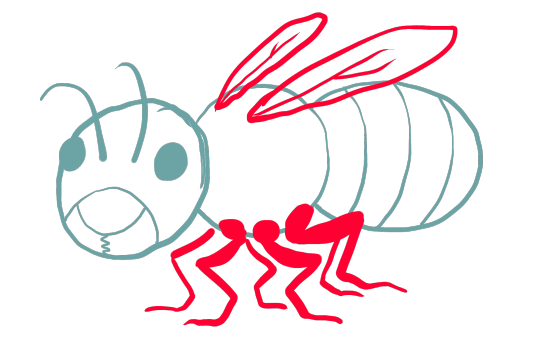
All legs and wings are always attached to the thorax!
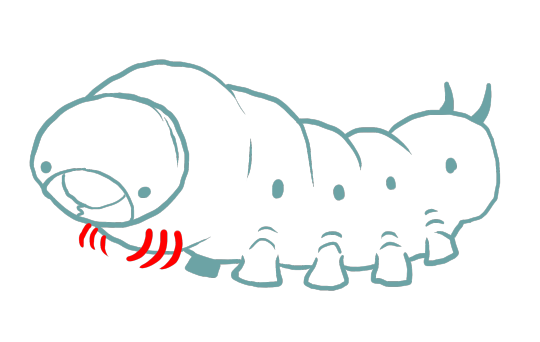
Caterpillars still have six legs! They’re very small and up near the head. All the other “legs” are actually just suckers on its underbelly.
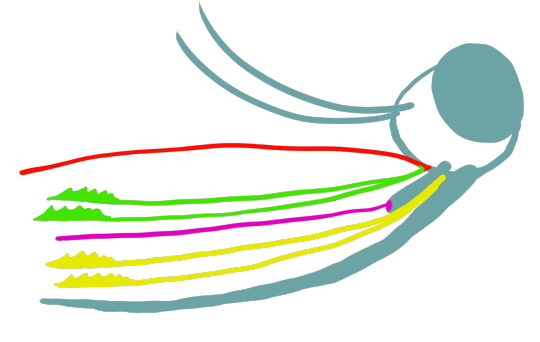
You will be forgiven for never drawing this but this is how many parts a mosquito’s mouth actually has. Every piece you can find in another insect’s mouth - the “upper lip,” the mandibles, the palps, etc. - are all present as different needles and blades!
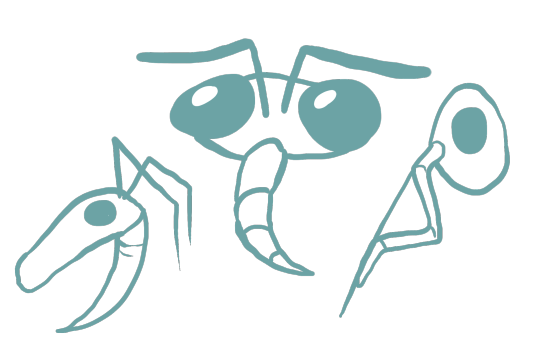
The word “bug” originally referred only to one group of insects, the hemiptera, including stink bugs, assassin bugs, aphids, cicadas, bed bugs and water striders to name a few. One distinguishing feature of this group is that it did away with all those separate mouth parts - all “bugs” have just a single, hollow “beak” or “proboscis” to feed through!
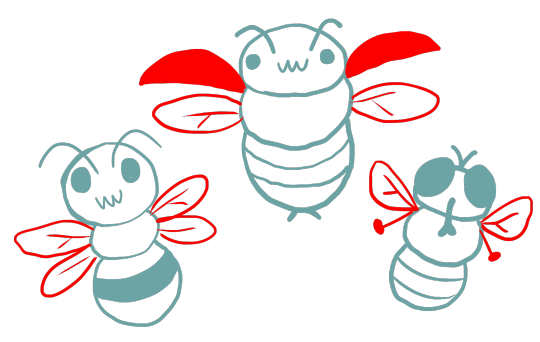
The vast majority of insect groups have wings or at least members with wings, and all insects with wings have FOUR of them…..except that in beetles, the front wings evolved into solid, protective shields for the hind wings, and in true flies (which includes mosquitoes!) the hind wings evolved into tiny little knobs with weights on the end, called halteres, which the fly’s fast-paced brain uses to feel its orientation, altitude, speed, surrounding air pressure and other fine data making them quite possibly the most advanced aerial navigators on the planet.
OTHER NOTES THAT DON’T NEED ILLUSTRATION:
Insects and other arthropods HAVE TRUE BRAINS in their heads, made of brain cells like ours. They can learn, memorize, and make decisions.
Insects do have males and females and obviously only females lay eggs. Fiction is always getting this wrong, but I guess it also does so with birds so whatever.
Of insects, only termites, ants, some bees and some wasps have fully evolved a eusocial colony structure with “queens” as we think of them. Of these, the termites are actually highly specialized cockroaches, and the rest (bees, ants, wasps) are the same exact group.
The scrabbling, clicking noise associated with insects is usually added artificially in nature footage for dramatic effect. While their movements likely emit some sort of sound, it’s probably no “louder” proportionately than, say, the sound of a cat’s fur as it walks. In other words it should not be noticeable; what kind of animal survives as a species if it clatters with every step??
Compound eyes do not see a bunch of identical little images. There is no advantage to any organism seeing that way. An insect sees one big picture just like you do.
Only some insect groups have “larvae.” Others have “nymphs” which resemble fully grown but wingless insects.
The only insects with a venomous bite are some true bugs and some flies. There are no beetles or roaches or wasps or anything else that inject offensive toxins through their mouth parts, as far as I know!
The only insects that lay eggs inside other insects parasitically are certain wasps and flies. There are also NO arachnids that do this.
Only certain bees, wasps and ants have stingers on their abdomens. These are modified from egg laying appendages, so it’s also only ever the females.
The only other kind of “sting” in any insect is a venomous hair or spine, mostly seen in caterpillars.
15K notes
·
View notes
Text
is the method of playing both characters in regular gameplay meant to be two player, or does it alternate between levels, or is it some fusion like a shadow of mordor type where you briefly inhabit the other character to do tasks and overcome obstacles you encounter in the world? because if it’s the latter, that’d be an incredibly intense boss fight to play two on two
My biggest never-gonna-happen-but-I-want-it-anyway AAA game is basically a cyberpunk Legend of Zelda that extrapolates a whole cultural and technological aesthetic from the Ancient armour and weapon sets from Breath of the Wild.
8K notes
·
View notes
Photo

The Floating Tomb from the Dragonlance module DL4 Dragons of Desolation (TSR, 1984), one of my favourite dungeons from the 1st Edition era.
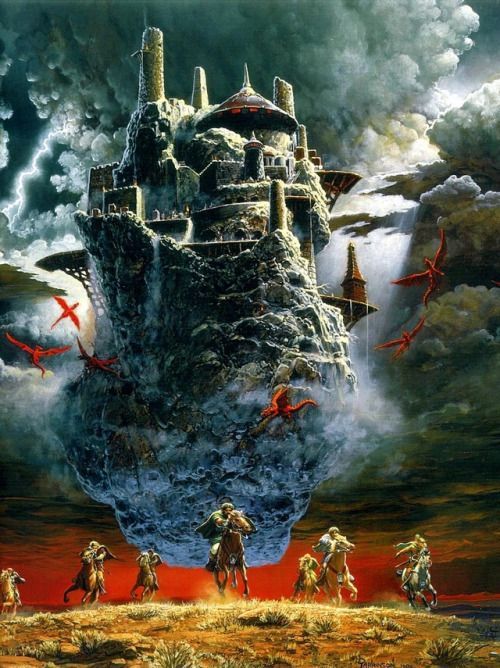
Keith Parkinson’s art for the cover, showing the tomb in all it’s glory.
608 notes
·
View notes
Text
The BBC is releasing over 16,000 sound effects for free download
171K notes
·
View notes
Text
More reverse Dungeons & Dragons adventures:
A wizard has become trapped at the bottom of their own dungeon, and magically summons the party to free them
The party must resurrect a dragon, who had served as guardian of a nearby town before dying in a bizarre accident
A clan of famed goblin artisans are relocating their village; the Queen has hired the party to ensure that the site the goblins choose is within her territory
The party must create a magical artifact in order to prevent the death of a benevolent deity
A local population of endangered Golden Owlbears is suffering from the depredations of an unknown trophy hunter; the party has been asked to put a stop to it
The party must find a non-violent way to get rid of an unwelcome princess who refuses to leave
10K notes
·
View notes
Photo


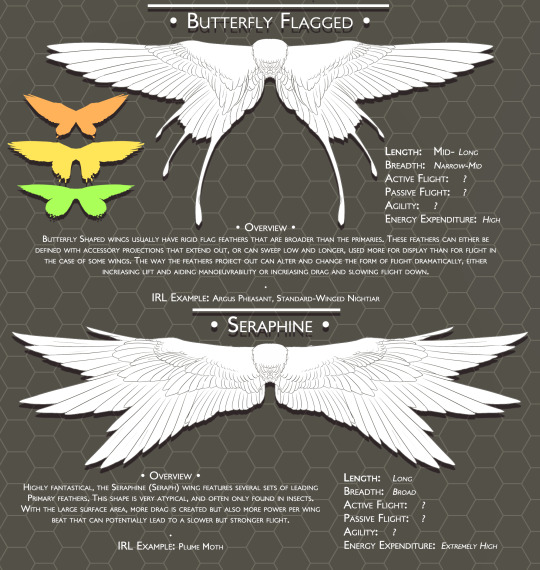
Blue’s Feathers and Wings Compendium: Atypical Wing Shapes
Part 1 [Standard ]| Part 2 [Atypical] | Feather Markings | Tail Feathers
These wings are a small array of Atypical wing shapes, complete with flippered wings, flightless wings, and fancy plumes. Again, creating my own names for some of these wing types since there isn’t any official naming of the different shapes, and I want to make it easily understandable for others rather than complicating these things with academic names.
20K notes
·
View notes

